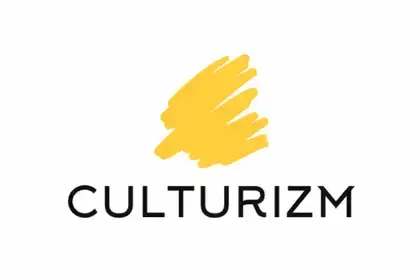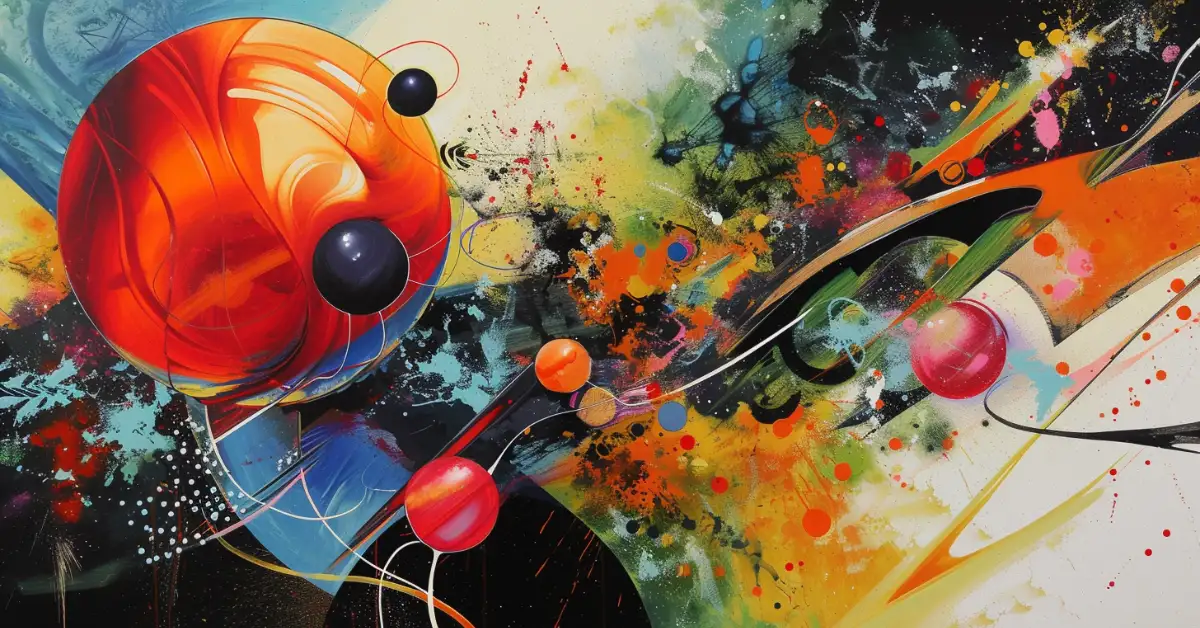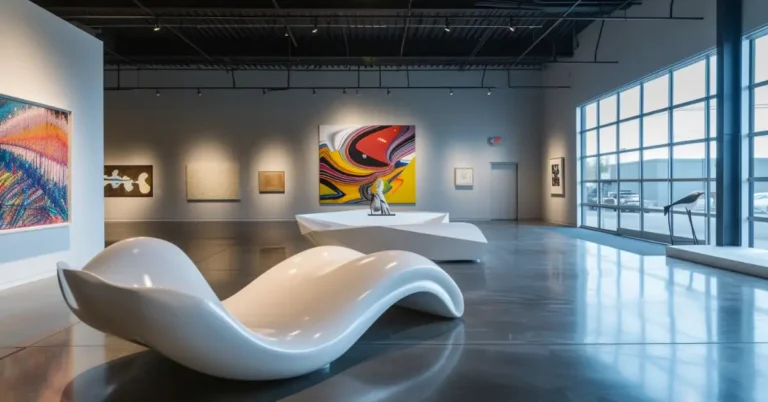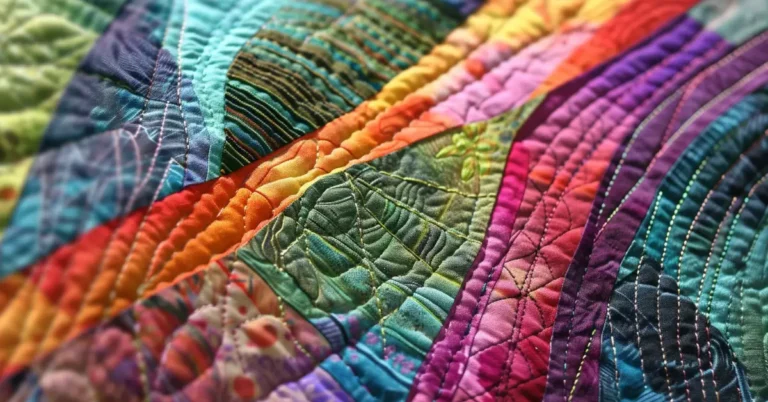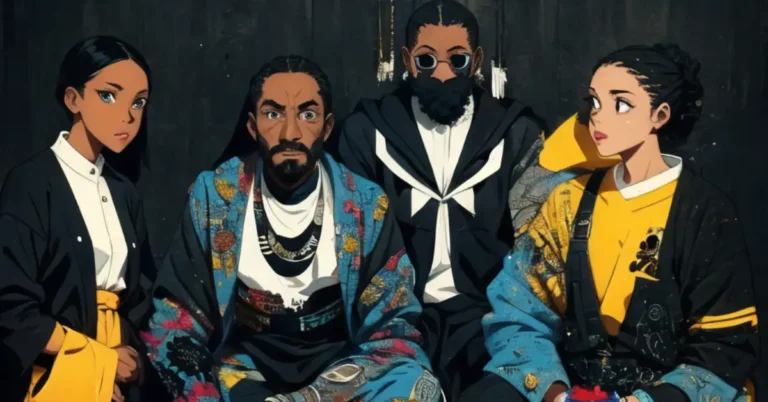Dive into the world of modern contemporary art, where innovation meets tradition and every piece is a conversation about our society and future. This art form, emerging from modernism’s roots, challenges perceptions and invites personal reflection through diverse media and methods.
What Defines Modern Contemporary Art?
All in short!
| Feature | Description |
|---|---|
| Time Period | Late 20th Century to Present |
| Characteristics | Experimental, diverse, multimedia, and often non-traditional |
| Mediums | Paintings, sculptures, installations, video art, performance art |
| Themes | Globalization, identity, technology, politics, environment |
Modern contemporary art is primarily characterized by its diverse aesthetic philosophies and the range of materials used. Unlike the periods that came before, artists today often adopt multiple styles and mediums to express their ideas. This period is marked by a move toward multimedia and digital art, with traditional forms like painting and sculpture remaining influential.
Evolution of Modern and Contemporary Art
Within the vibrant panorama of modern contemporary art, we observe a dynamic evolution, marked by radical shifts and the emergence of groundbreaking movements.
Historical Context and Movements
The cultural tides of the 20th century paved the way for the rich spectrum of modern art, blossoming into movements that defied tradition and embraced innovation. During the 1960s, a pivotal era for art, the Pop Art movement emerged as a powerful force, engendering a blend of popular culture and fine art. Icons like Andy Warhol and Roy Lichtenstein turned the mundane into the magnificent, questioning the very nature of art with their bold, graphic works.
On another front, Abstract Expressionism unfurled with visceral intensity, focusing on spontaneous, emotional expression through sweeping brushstrokes and impressive scales. This movement was less about depicting the world and more about provoking an emotional response, setting the stage for subsequent developments in modern contemporary art.

Influential Artists and Their Works
Marcel Duchamp, a provocative forefather of modernism, disrupted the art scene with his ready-made, like “Fountain” (1917), challenging the conventions of artistic craftsmanship. Duchamp’s legacy is a testament to the intellectual rigor that would characterize much of contemporary work.
Another pivotal figure, Vincent van Gogh, prefigured modern artistic angst with his intensely emotional style and vibrant color palette, leaving a lasting impression on the path of art. His “Starry Night” (1889) is a poignant display of the artistic individuality that would influence countless modern artists in their pursuit of personal expression.
Mediums and Forms
Modern contemporary art brings forth a diverse palette of mediums and forms, each contributing its unique essence to the vast world of creativity. We see artists pushing boundaries, turning everyday objects into striking installations, and intertwining disciplines to offer new experiences.

Sculpture and Installation Art
Contemporary sculpture transcends traditional materials like stone and bronze, often incorporating found objects, light, and even living organisms to challenge our perceptions of space and materiality. Installation art complements this by transforming spaces into immersive environments, creating dialogues between the work and its location.
Materials used in Sculpture and Installation Art:
- Traditional: stone, metal, wood
- Unconventional: plastics, glass, biodegradable substances
Painting and Works on Paper
While painting may seem timeless, contemporary painters experiment with various substrates and techniques, moving beyond canvas to digital formats or works on paper. This provides a different texture and interaction with mediums such as watercolor, ink, or pastels.
Contemporary Painting Techniques:
- Layering
- Mixing media
- Digital painting
Performance Art and Time-Based Media
Performance art is where the artist’s body becomes the medium, engaging directly with the audience, often in a time-based media format including video and digital projections. These art forms are ephemeral, existing at the moment, or captured and re-experienced through photography and video.

Examples of Time-Based Media:
- Live performance
- Video art
- Interactive digital installations
Our exploration of modern contemporary art mediums and forms shows a vibrant landscape where tradition meets innovation, creating new avenues for artistic expression and audience engagement.
Contemporary Art in Contemporary Society
As we explore modern contemporary art, it becomes evident that it not only reflects but also influences our cultural narratives and technological advancements.
Art and Cultural Narratives
Contemporary art acts as a mirror to society, projecting our cultural narratives with a candidness that both comforts and confronts. Artists channel these narratives through various mediums, from traditional paintings to dynamic street art. It’s in these visuals where we find a reflection of:
- Current social issues: Revealing conversations around politics, gender, and race.
- Cultural shifts: Expressing transitions in norms, values, and traditions within societies.

The Intersection of Art and Technology
The synergy between art and technology has birthed new experiences and mediums, such as digital art. Technology has not only expanded the toolkit for creators but also the accessibility of art, as seen in:
- Digital platforms: Enabling broad dissemination of artworks and interactive audience engagement.
- Innovation in creation: From AI-generated art to virtual reality exhibitions, technology propels the boundaries of creative expression.
Art Institutions and Galleries
When we think of modern contemporary art, it’s vital to recognize the instrumental role that art institutions and galleries play in the cultivation and celebration of this dynamic art form.

The Role of Museums and Exhibitions
Museums like the Museum of Modern Art (MoMA) in New York have become crucial in fostering an environment that encourages the understanding and appreciation of modern contemporary art. Their exhibitions often feature a diverse array of works, from paintings and sculptures to digital art and installations, providing a rich experience for enthusiasts and newcomers alike. At MoMA, ongoing renovations and expansions ensure that the experience of art remains current and invigorating.
Notable Museums:
- Museum of Modern Art (MoMA)
- Whitney Museum of American Art
Exhibitions to Watch:
- MoMA’s New Photography Series
- Whitney’s Biennial, showcasing the latest developments in American art
Contemporary Art on the Global Stage
Contemporary art galleries operate on the global stage and are often the places where new artistic trends emerge and gain recognition. Galleries serve as pivotal spaces where artists’ works are not just displayed but also critiqued, sold, and shared with the public. For example, The Whitney Museum of American Art has been instrumental in promoting American artists and bringing their work to a wider audience. These spaces offer a glimpse into the diversity and complexity of contemporary art, and, through their exhibitions, play a significant part in shaping the art narratives that resonate on a global level.
Key Galleries:
- Global: Gagosian, Pace Gallery, David Zwirner
- Regional Contemporary Art Hubs: 303 Gallery (New York), White Cube (London)
By visiting these art institutions and galleries, we gain deeper insights into the world of modern contemporary art and contribute to the vibrant cultural conversation that it sparks.

What I Love about Modern Contemporary Art
The allure of modern contemporary art draws us in with its pulsing energy and dynamic forms. It’s a broad term that encapsulates the artistic works produced during our lifetimes, speaking directly to the issues and themes of the present day. We treasure this form for its diversity, its capacity to challenge the status quo, and its unbridled creativity.
| Aspect | Why It’s Engaging |
|---|---|
| Diverse Mediums | Utilizes everything from traditional paints to digital media. |
| Social Commentary | Reflects our world’s current events and societal challenges. |
| Innovative Styles | Breaks boundaries with new interpretations and techniques. |
| Interactive Pieces | Often invites us to become part of the art experience itself. |
What makes modern contemporary art stand out, for us, is the relentless pursuit of innovation. Traditional lines and shapes give way to abstract forms, while color palettes explode beyond the expected. And it’s not just a feast for the eyes—installations often invite us to interact, blurring the lines between the viewer and the piece.
It is this rich landscape of expression that continually draws us back to modern contemporary art—a field where anything is possible, and everything is questioned.
FAQ – Modern Contemporary Art
When did modern art become contemporary art?
Modern art transitioned to contemporary art around the 1960s to 1970s, marking the shift to practices reflective of that period onwards.
Can you say modern contemporary?
The term “modern contemporary” is not typically used to describe art because it conflates two distinct periods. “Modern art” refers to works from the late 19th century to the 1970s, while “contemporary art” refers to art from the 1960s or 70s to the present.
What are the similarities of modern and contemporary art?
Modern and contemporary art both challenge traditional aesthetics, explore new materials and techniques, and engage with social and political issues. They oscillate between figuration and abstraction and often prioritize concept over form.
Is contemporary art relevant to this modern day generation?
Yes, contemporary art is relevant to this modern day generation as it reflects current cultural dialogues, explores contemporary issues, and allows for personal and cultural expression, making it an integral part of today’s society.
If you enjoyed our blog post on “Modern Contemporary Art,” we’d love to hear your thoughts! Please share your experience with us in the comment section below.
If you want to keep reading more from us, have a look at these articles.
